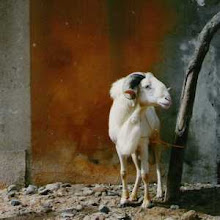"In a recent article entitled All That Remains: The Art of Slow Photography, photographer and writer Mandelbrot, also known as Stephen Osborne, aptly describes the act of seeing as an activity that interweaves the past with the present. He states: "In 'real' life we 'see' only in the after-moment, where the image, the glimpse, adheres: the face in the crowd, the pattern of a garment, gone and then remembered almost instantly in the vanishing moment, perhaps even an extended moment, grasped as having just been perceived" (Osborne, 2003, p. 50). The pinhole image is focused in the centre and progressively blurs outwards to the periphery; depth of field is infinite. Movement, when using such an image-making technology, cannot be fixed. In other words, pinhole technology contains and re-presents the world in a slightly dreamlike state that demands that the viewer move imaginatively between multiple perceptions of time.
Rather than producing an image with crisp neat edges, capturing a fleeting moment in time, pinhole photographs, as poetically described by Osborne, are
more like blotters soaking up light, and time; in them the moment is extended, stretched out. In slow photography, Then and Now engage our perception in turn, like the vase that looks like two faces and then a vase again. Slow photography reveals another aspect of the optical unconscious: the duration of things; time stretched out. (2003, p. 54)"
Source: Andrea Fatona / in Canadian Journal of Communication, Vol 31, No 1 (2006)

Aucun commentaire:
Enregistrer un commentaire